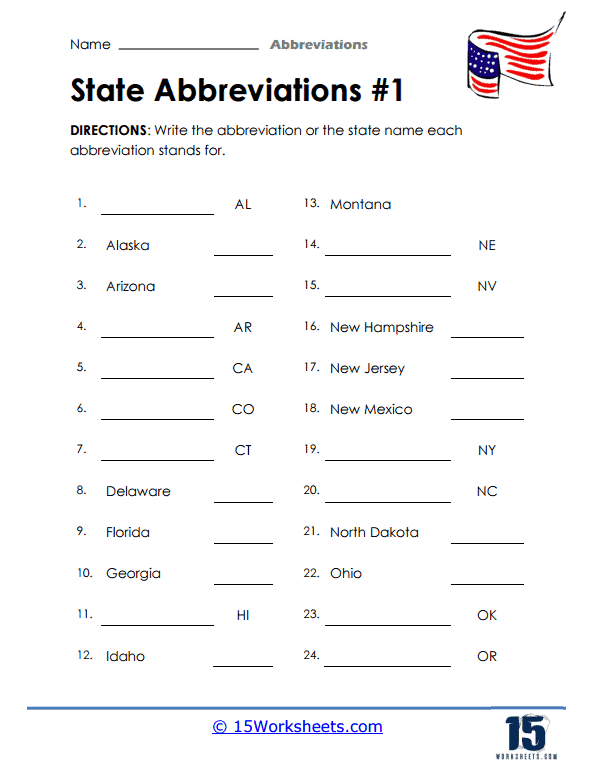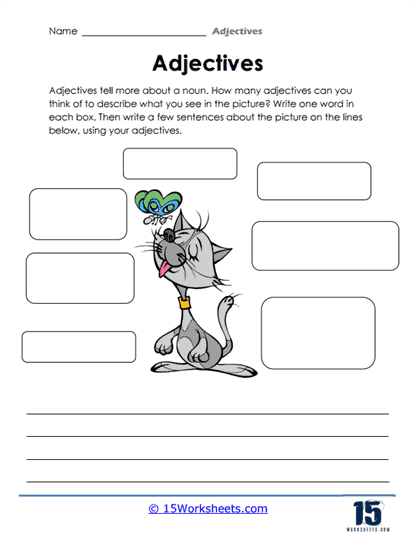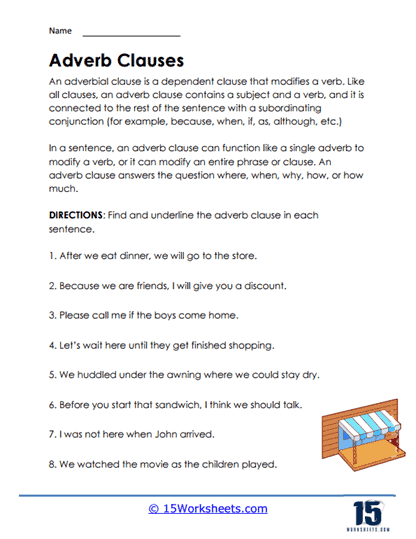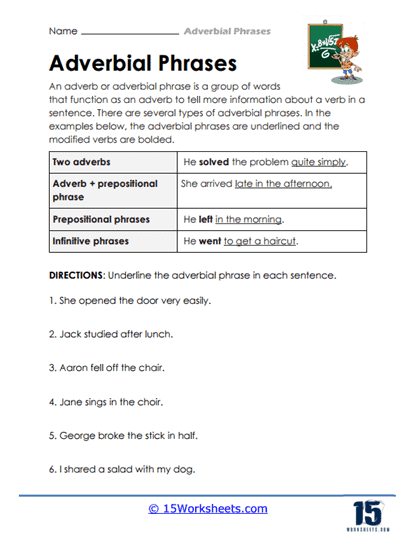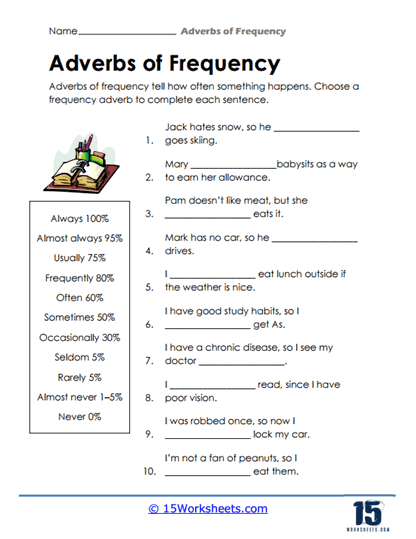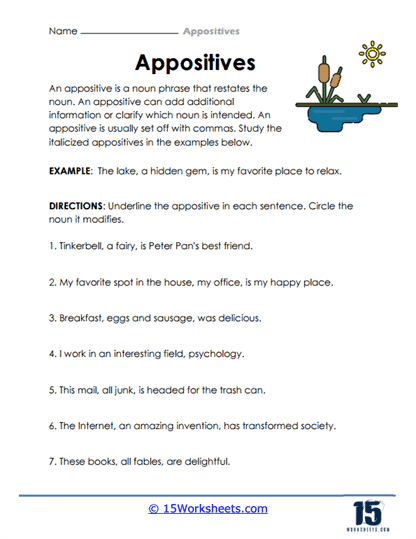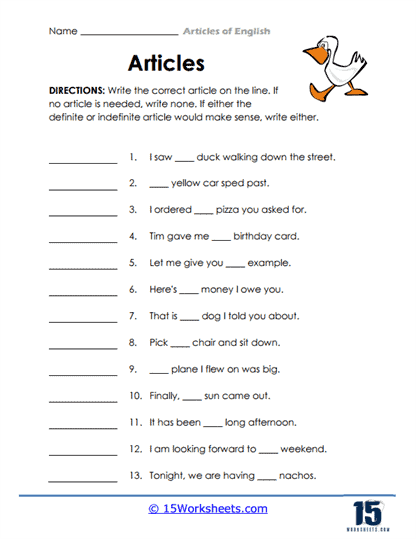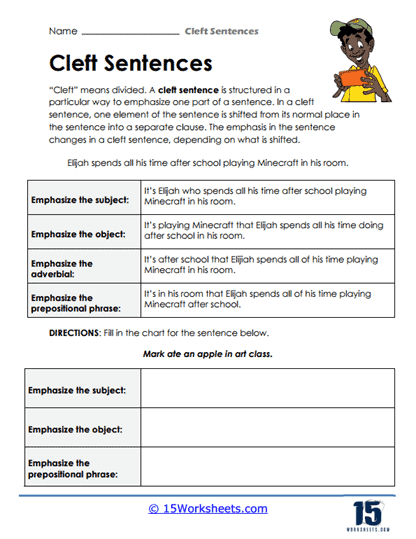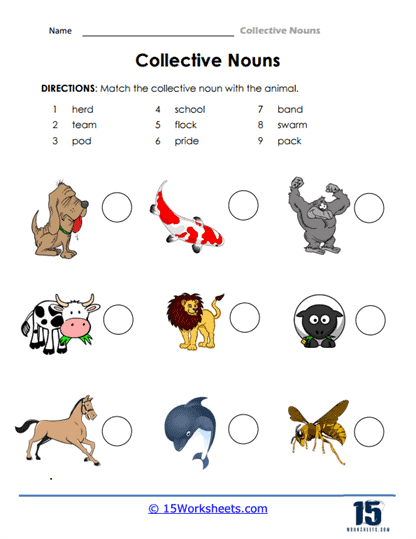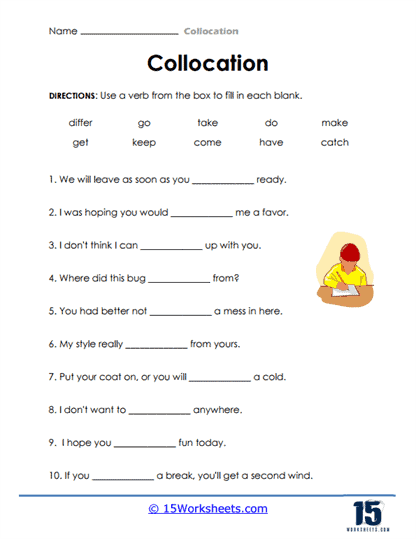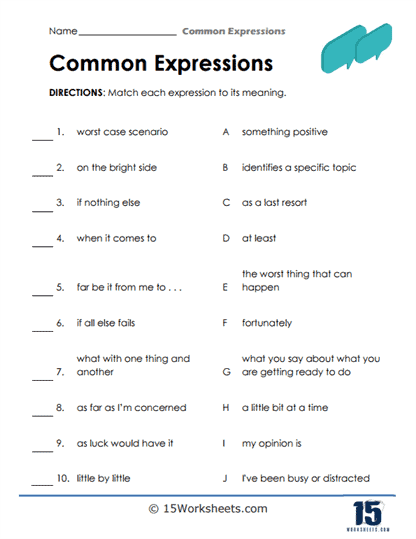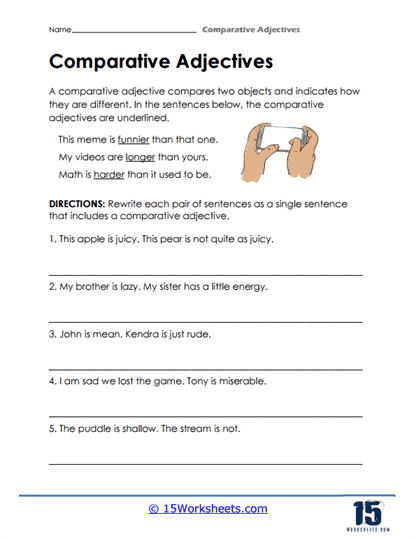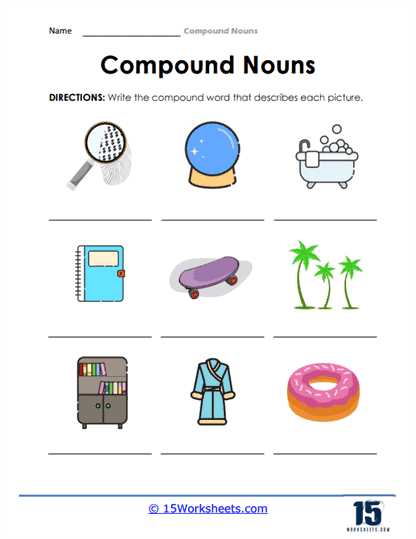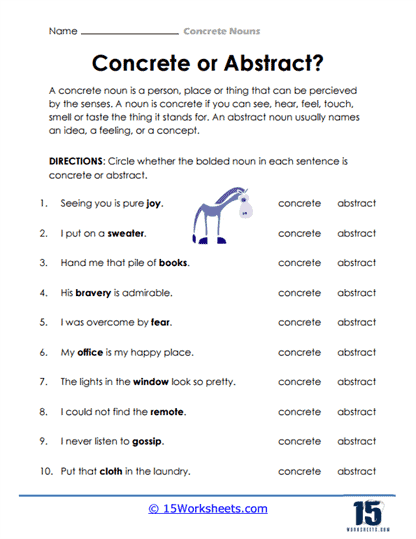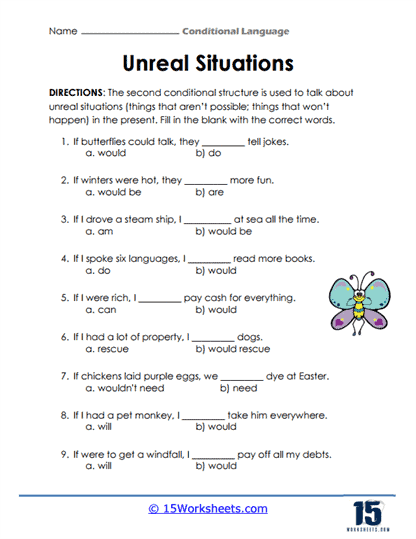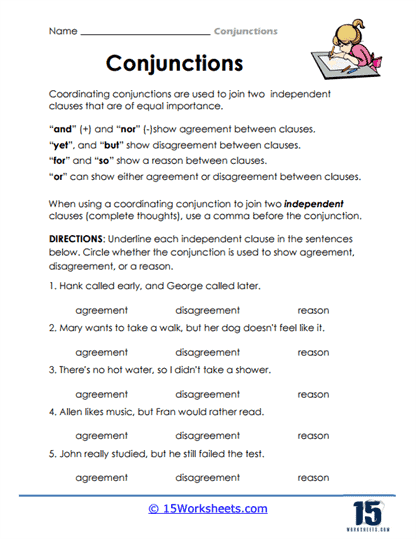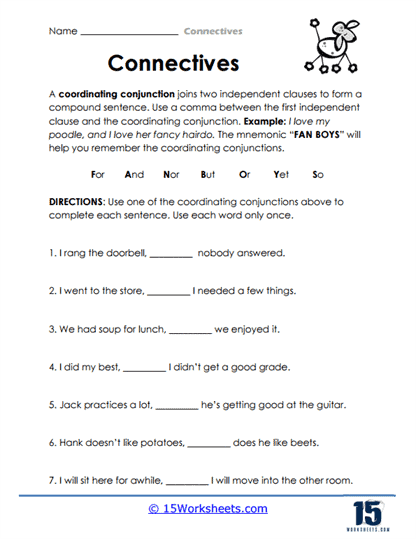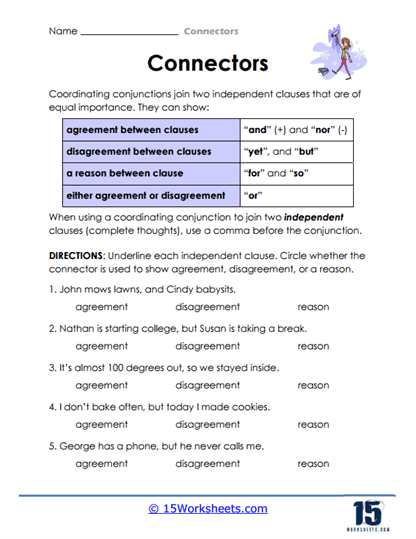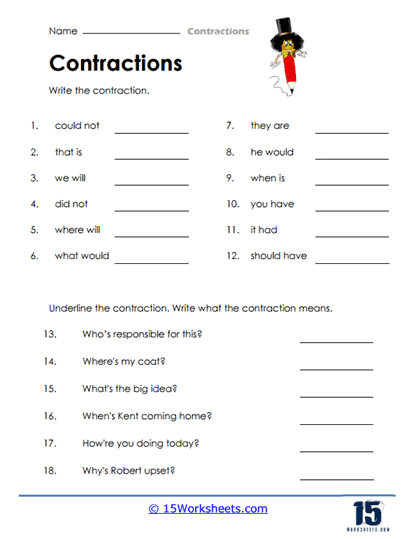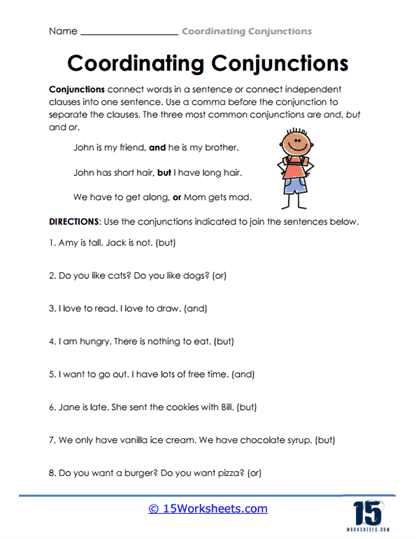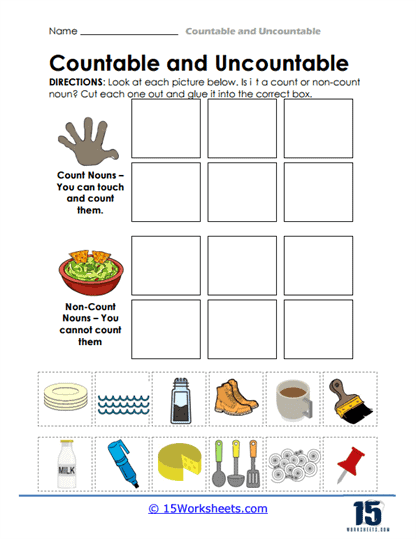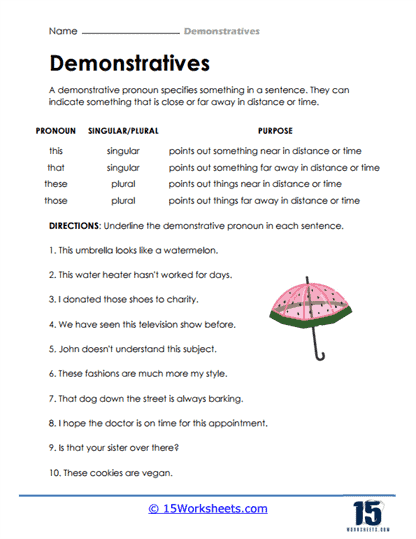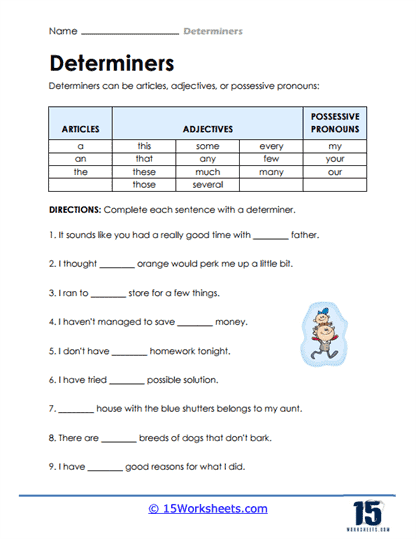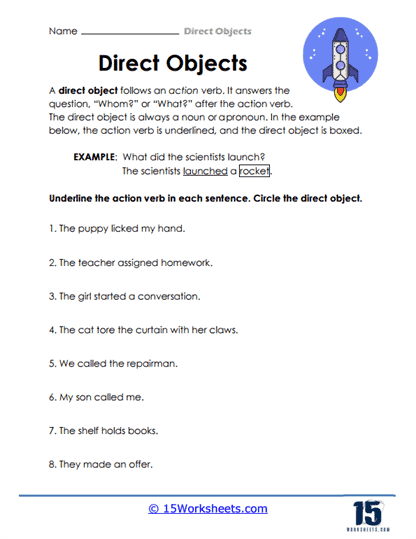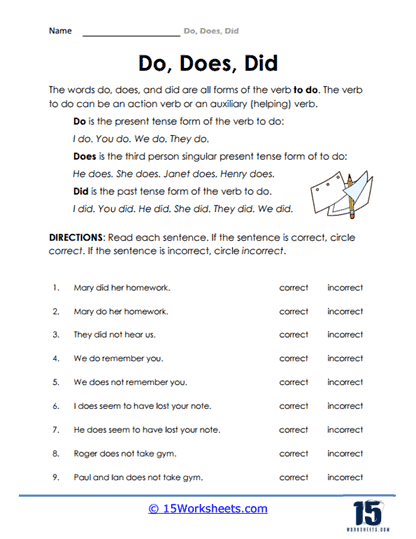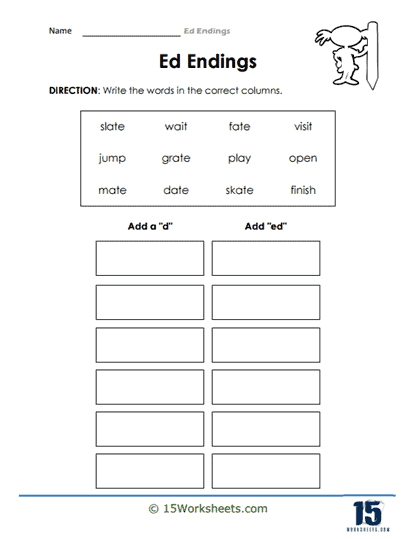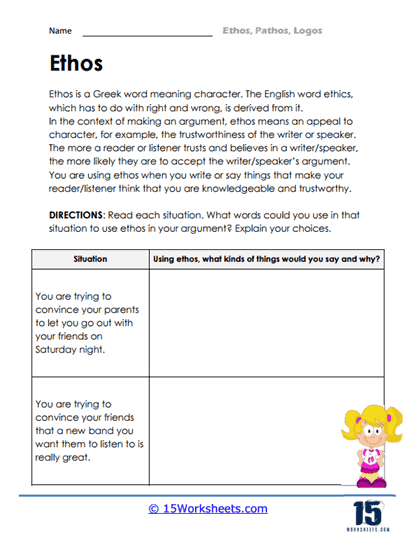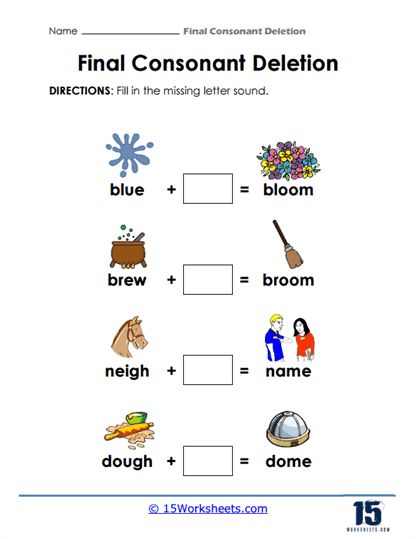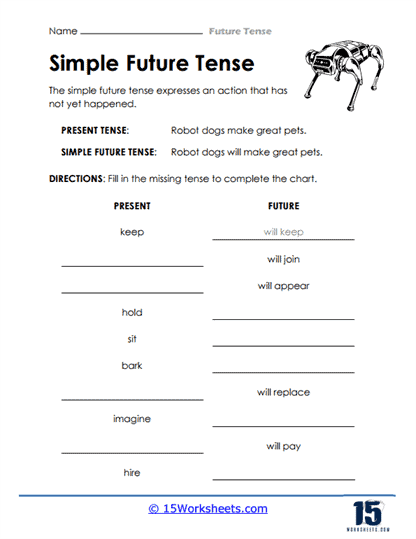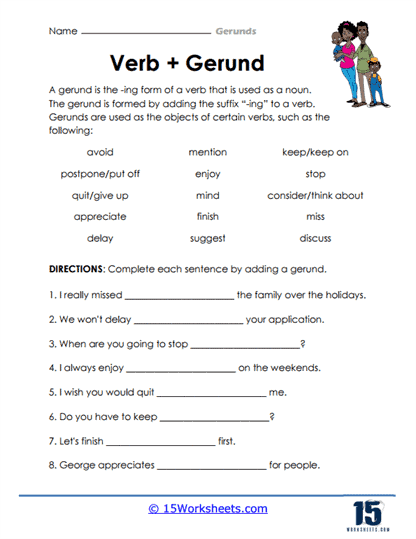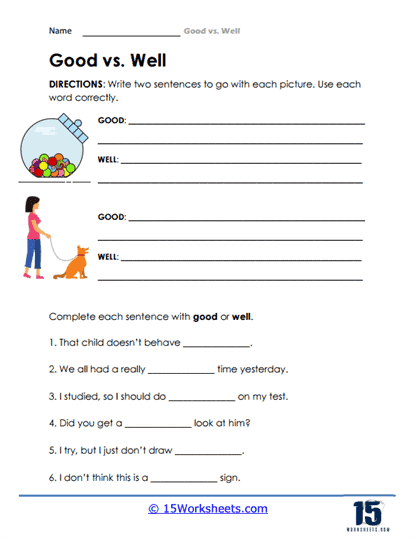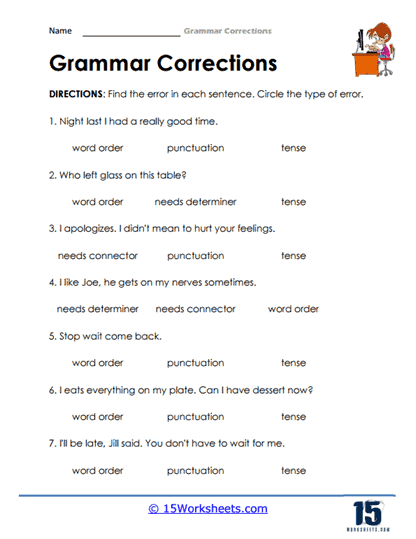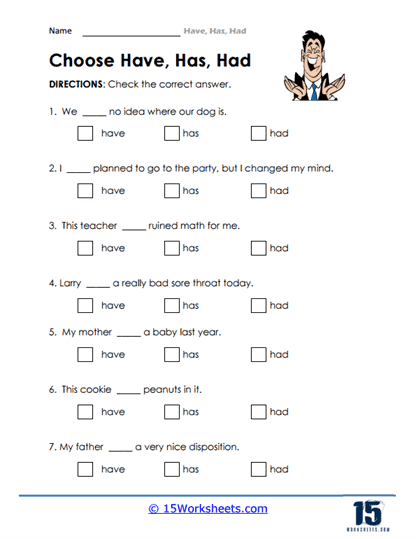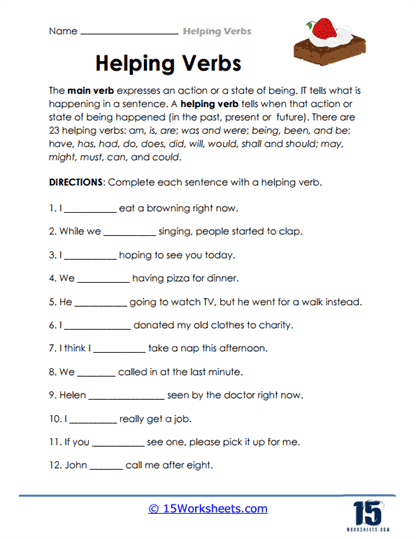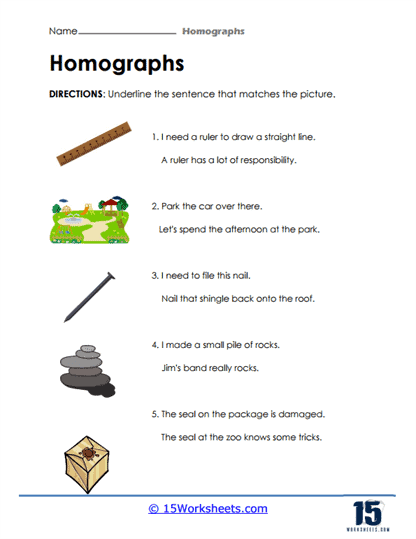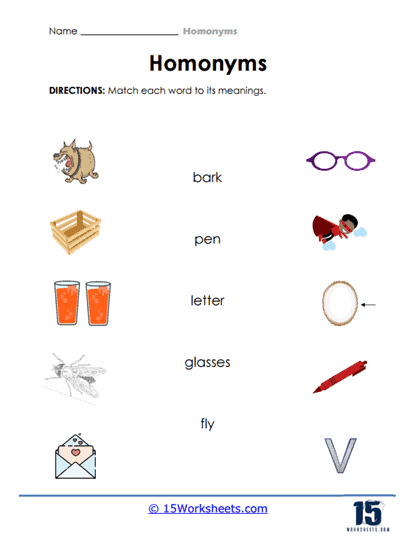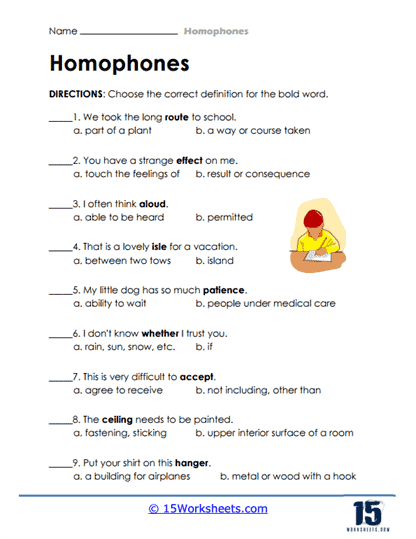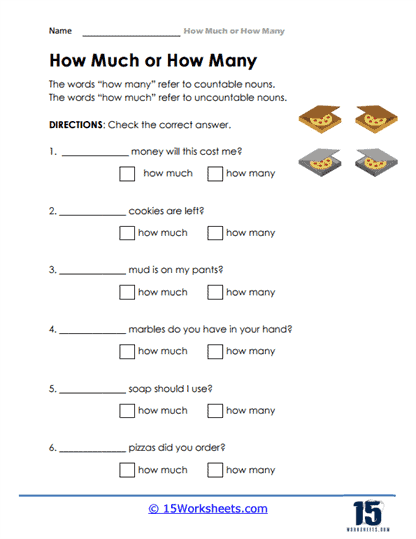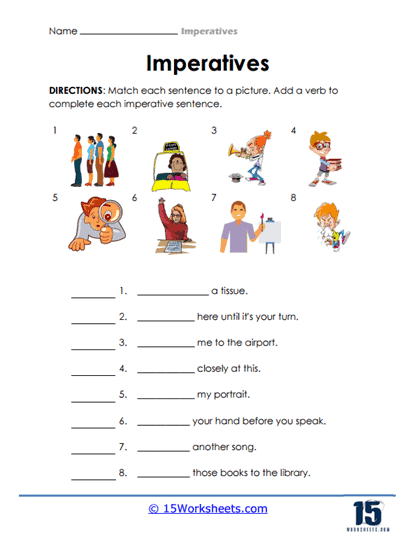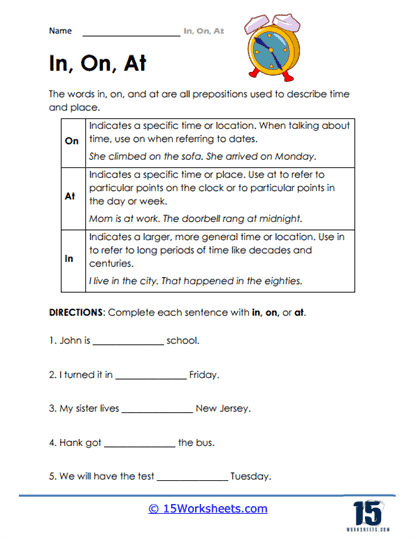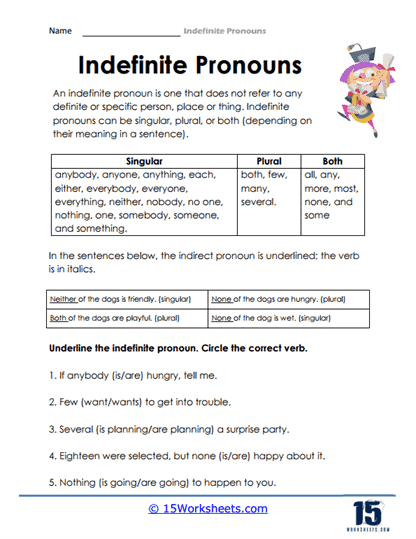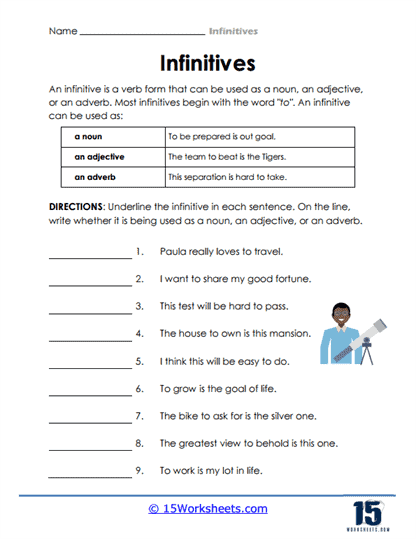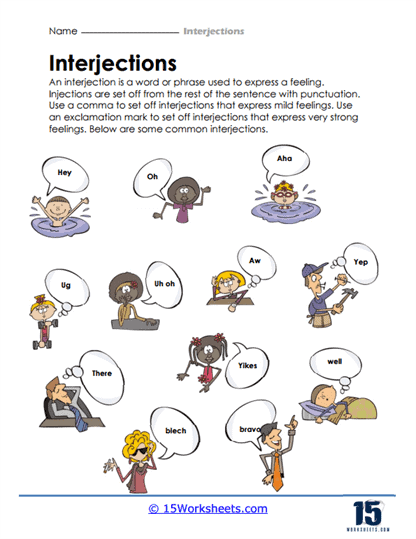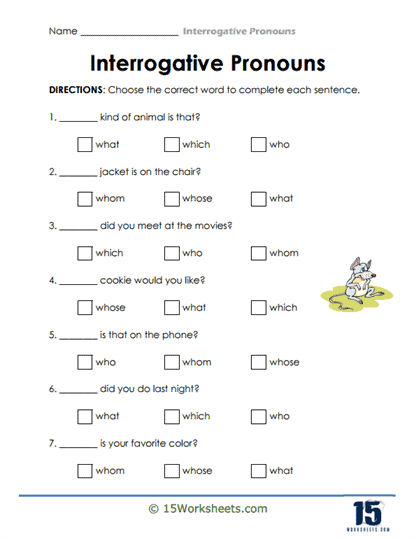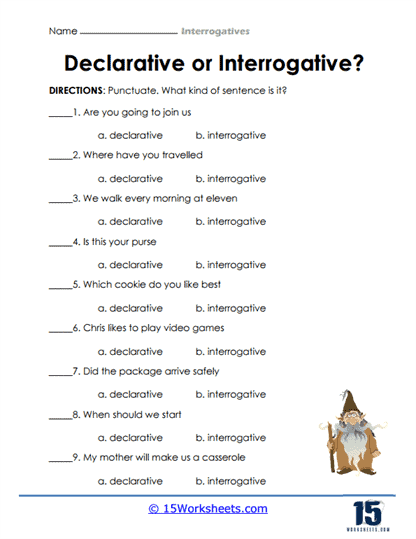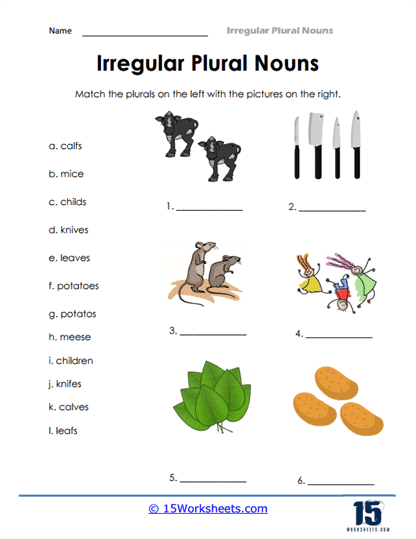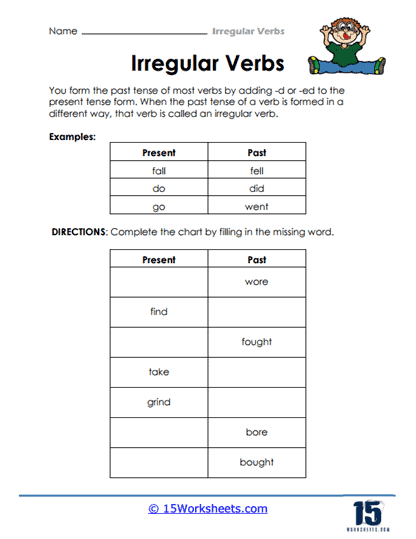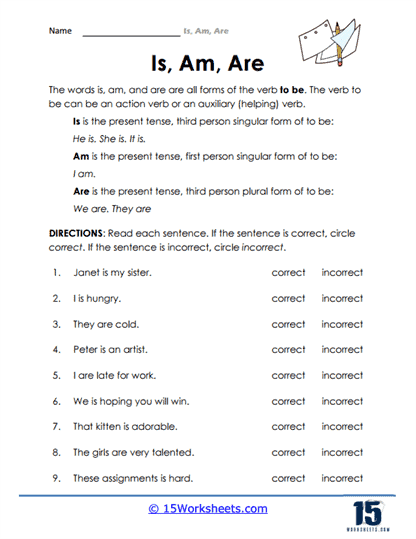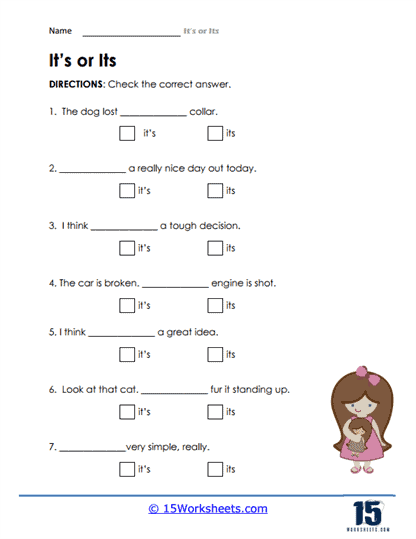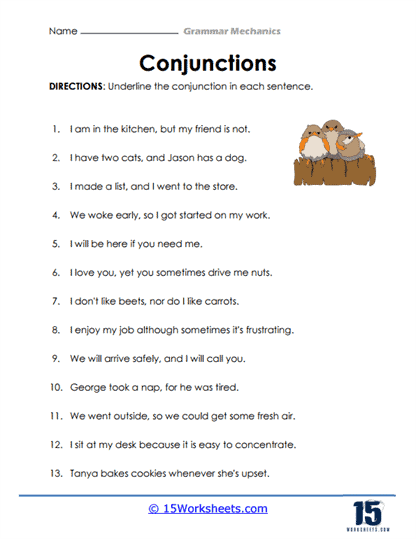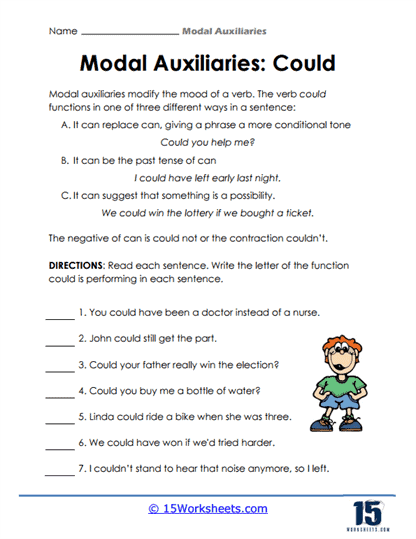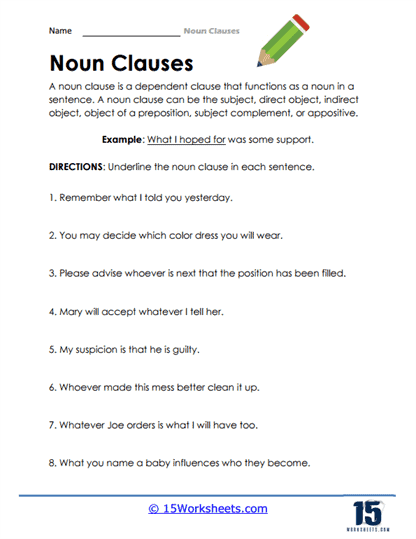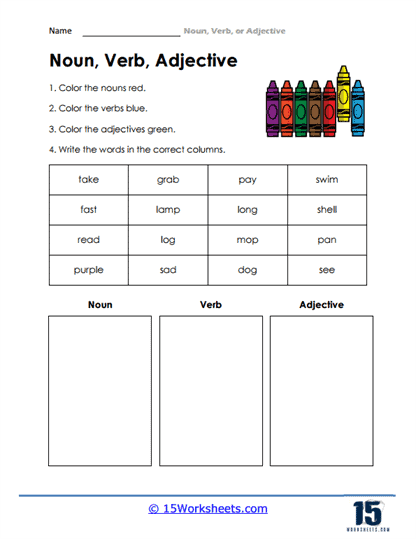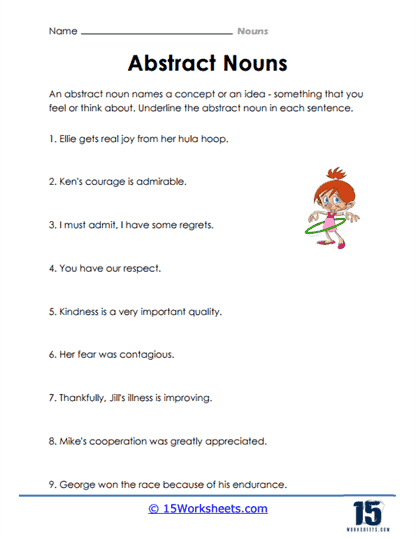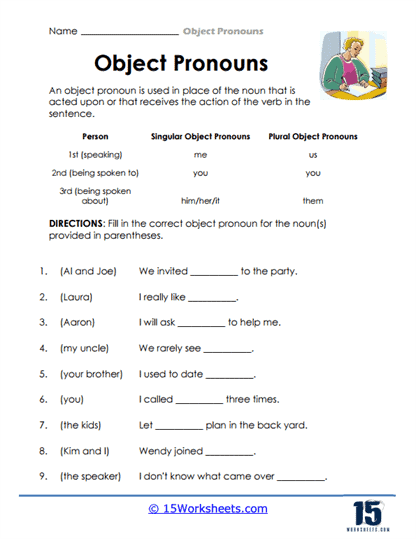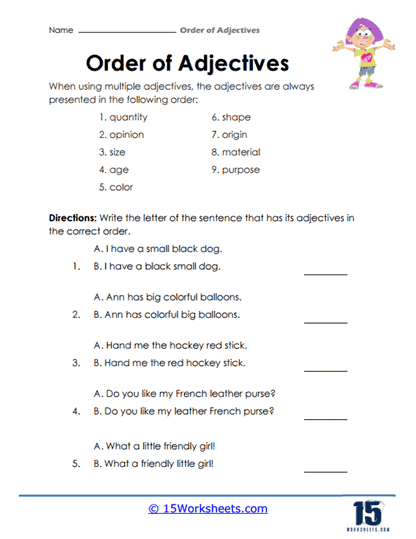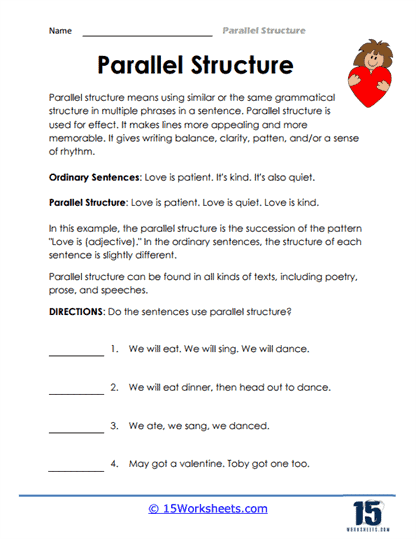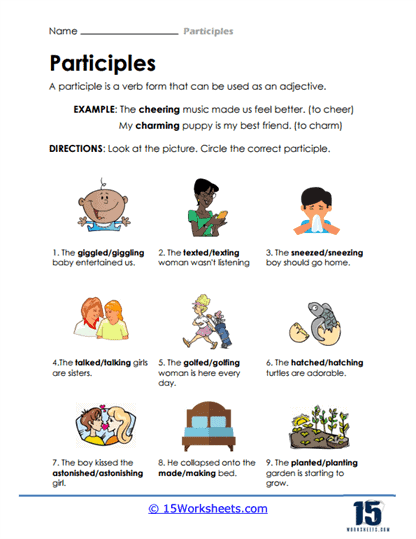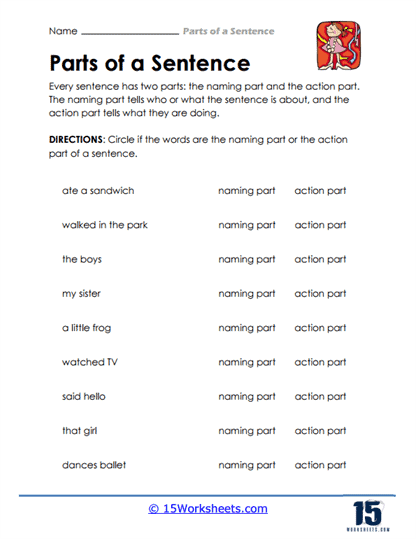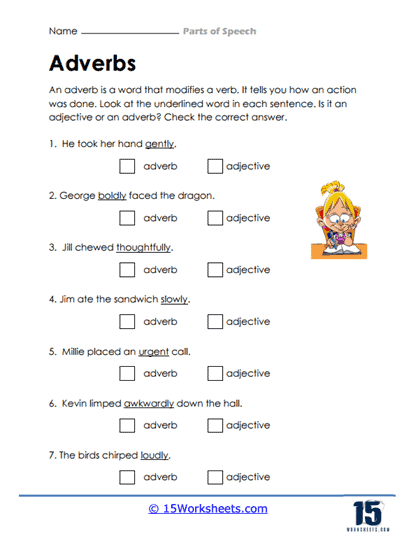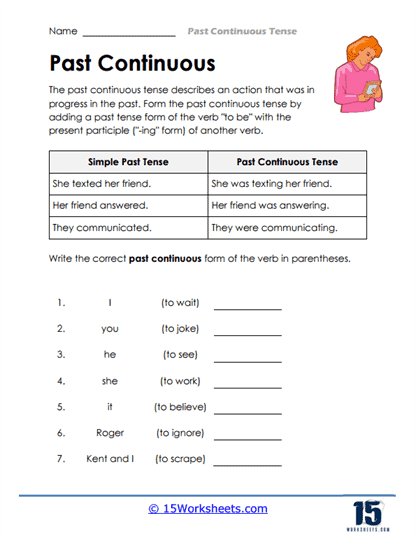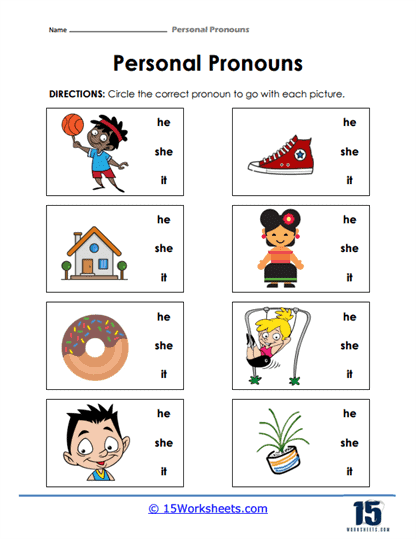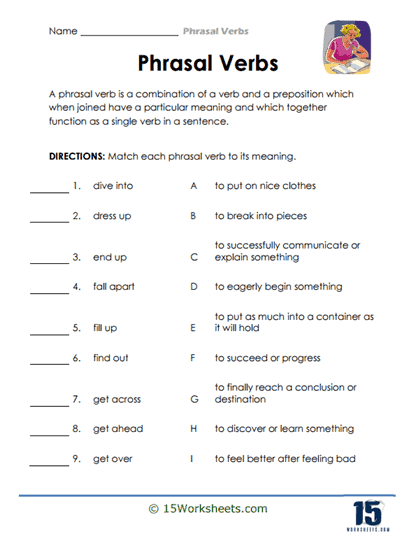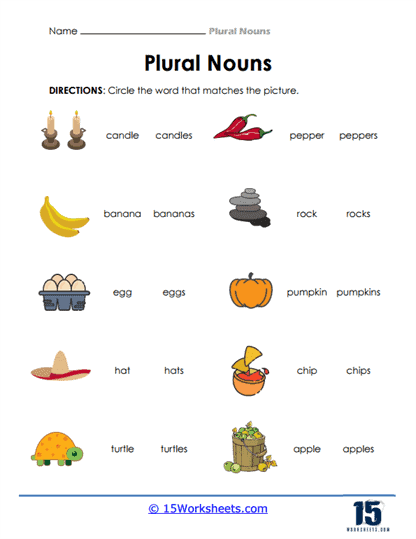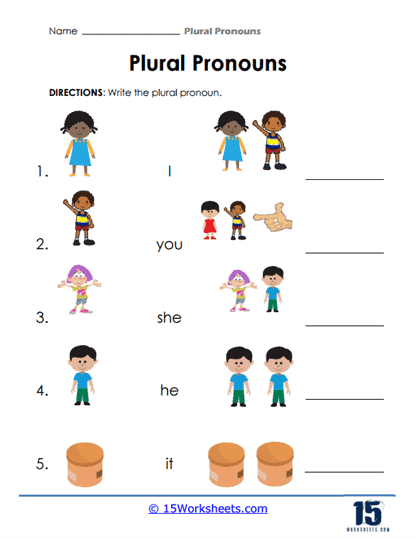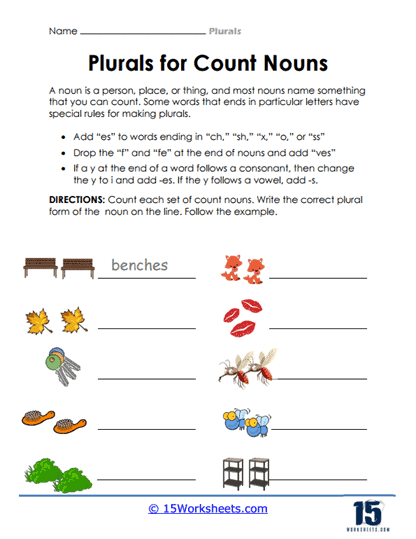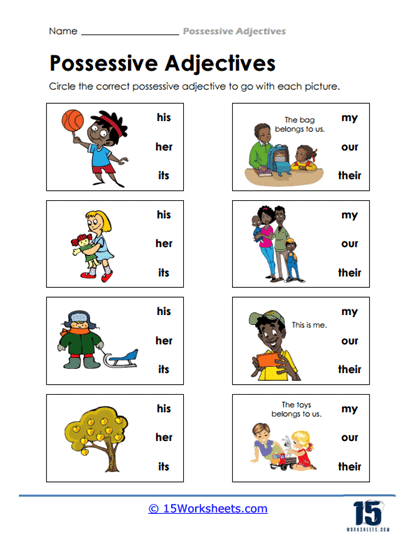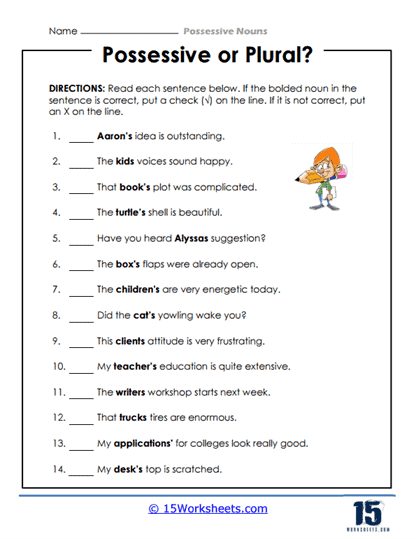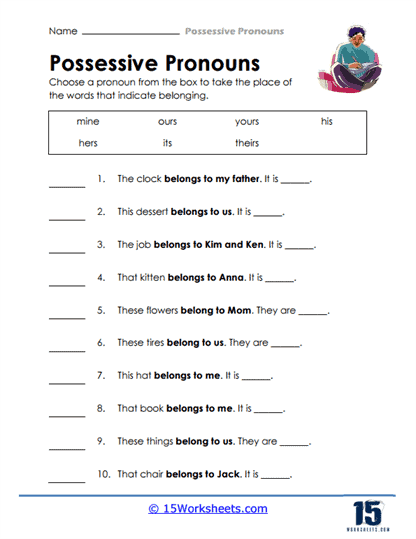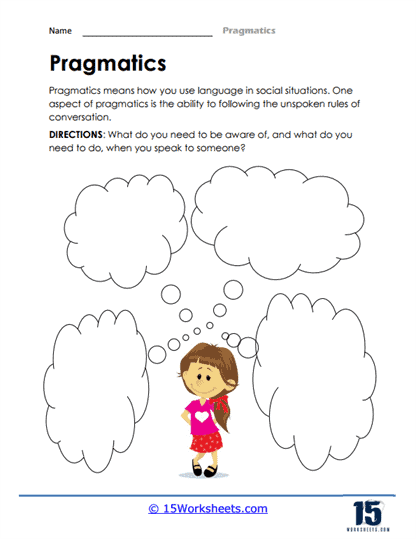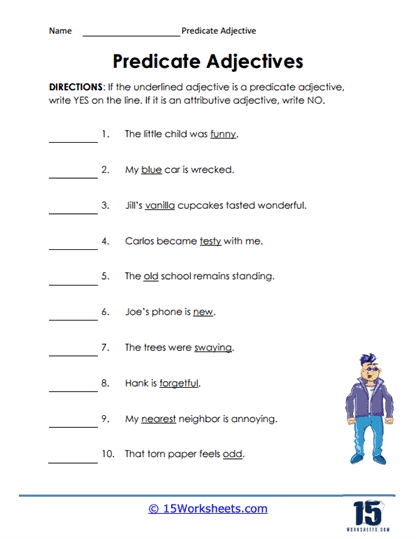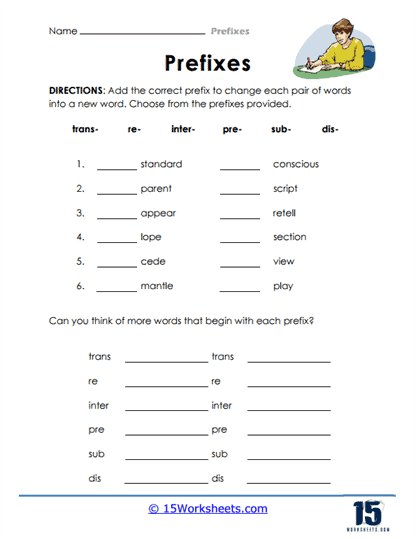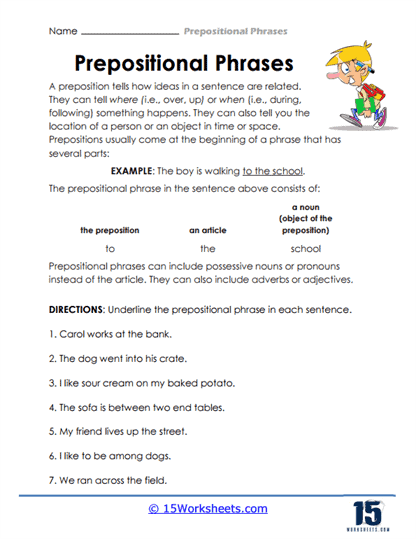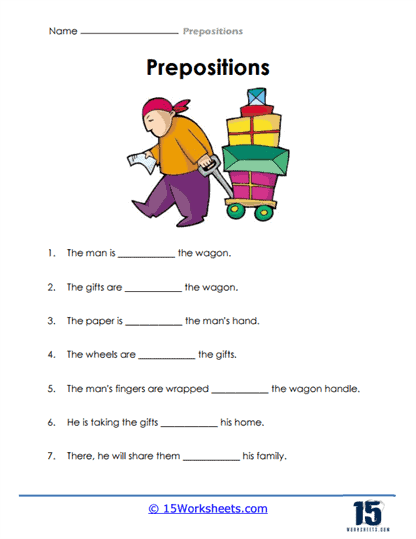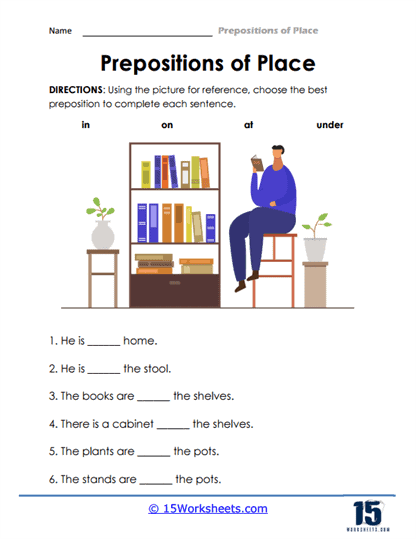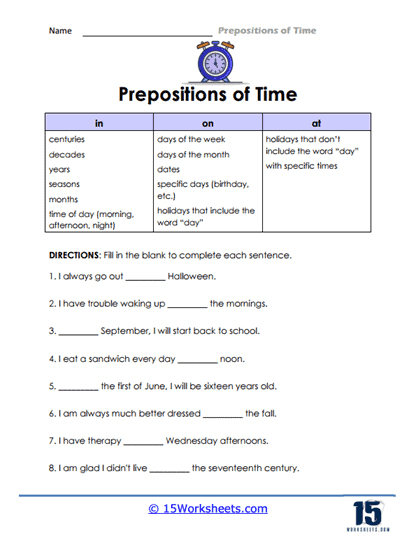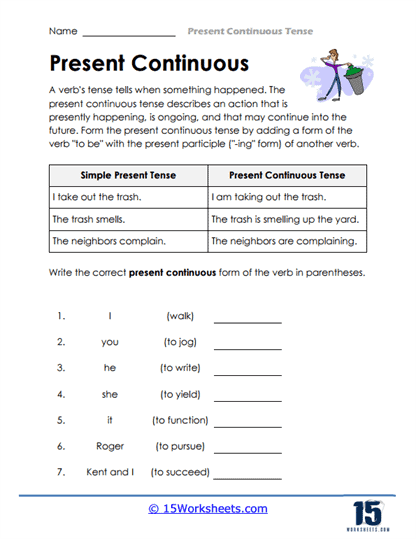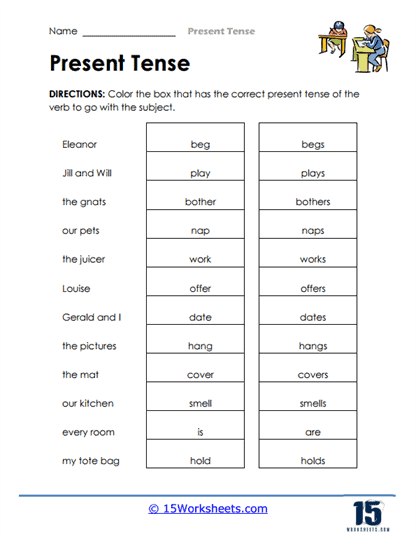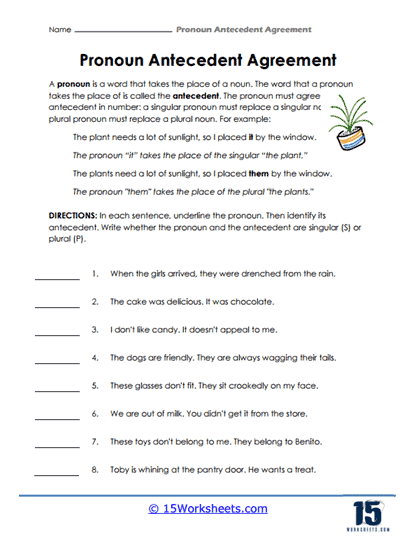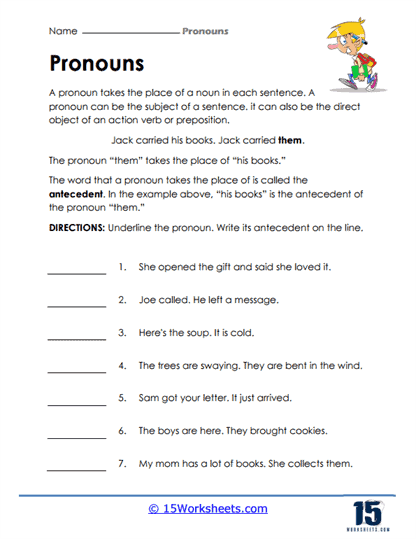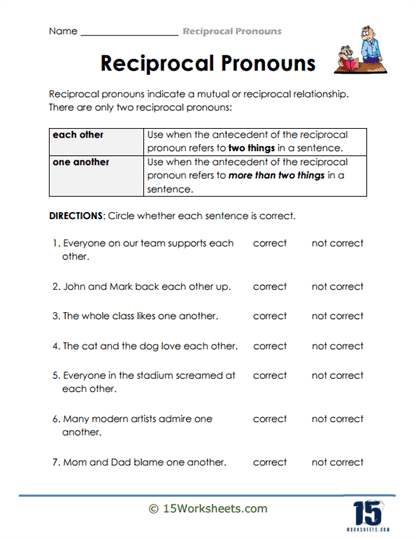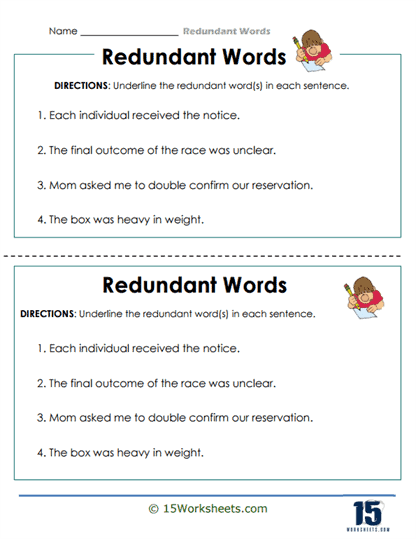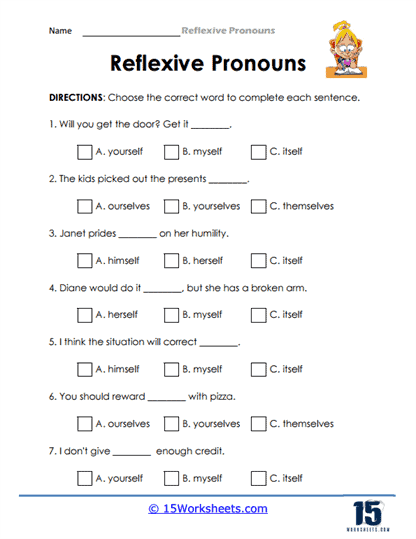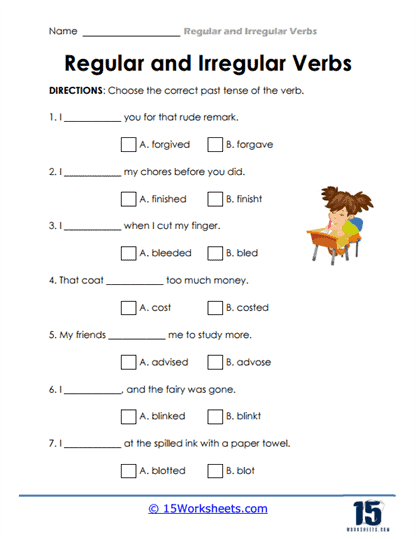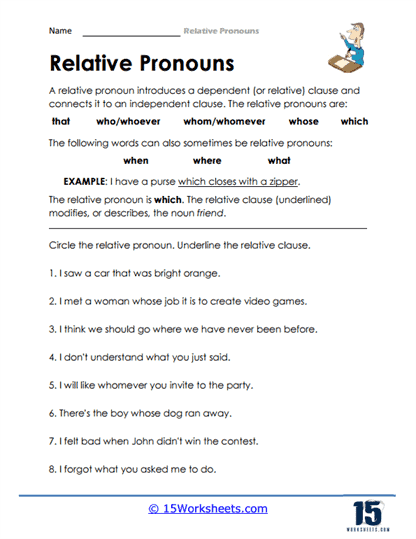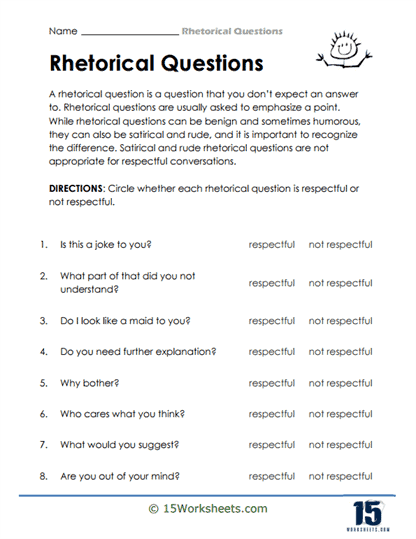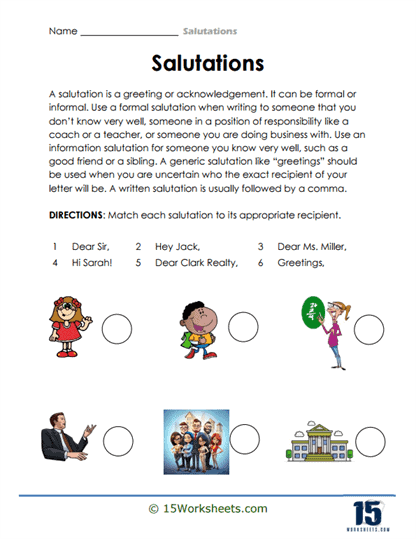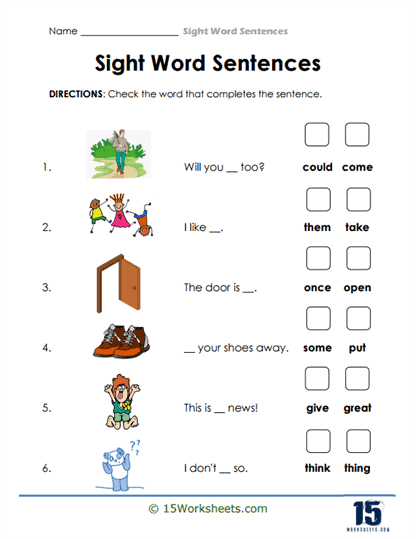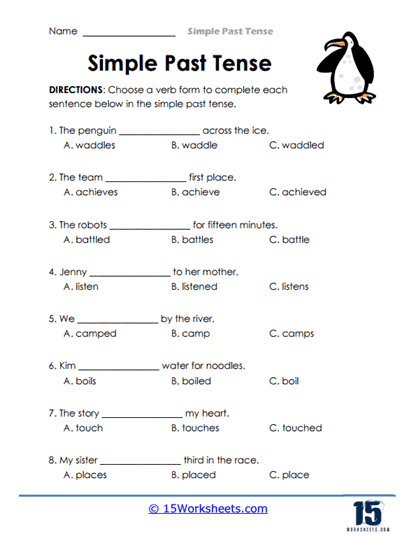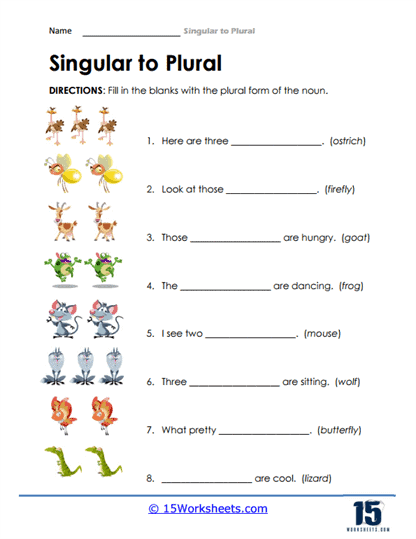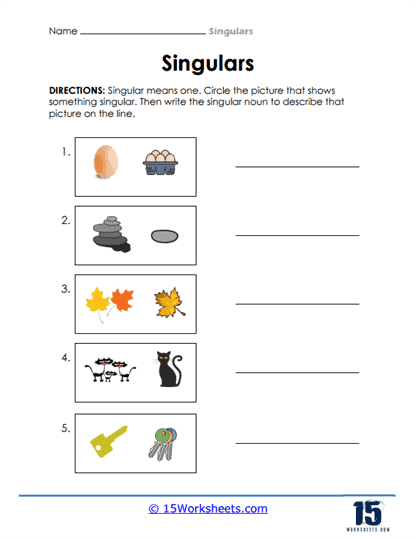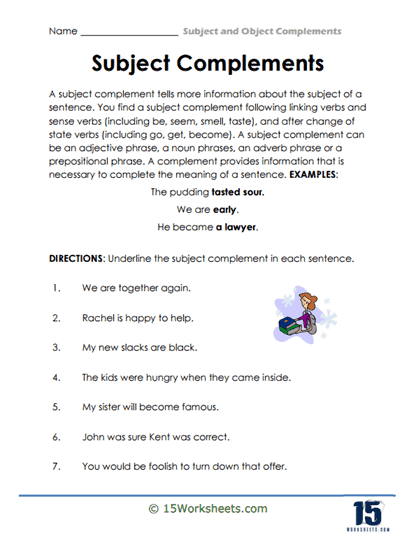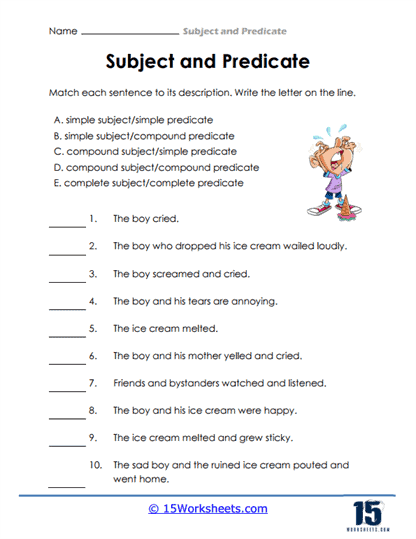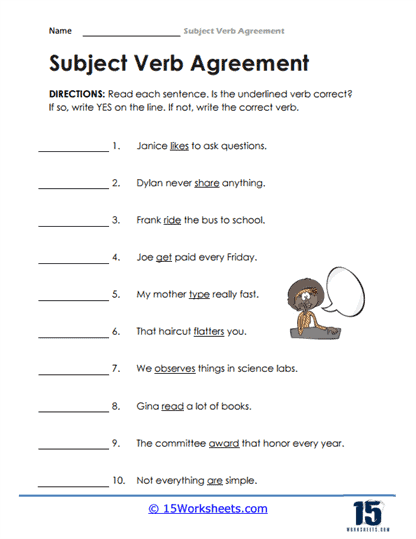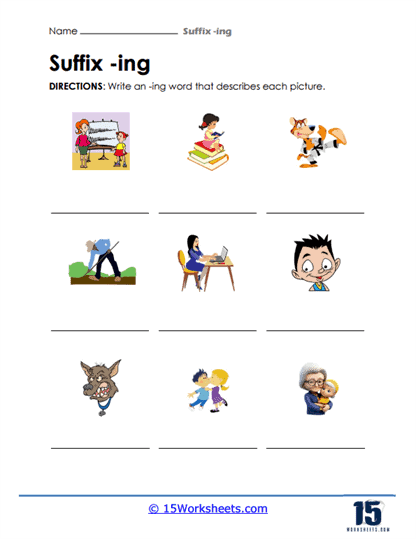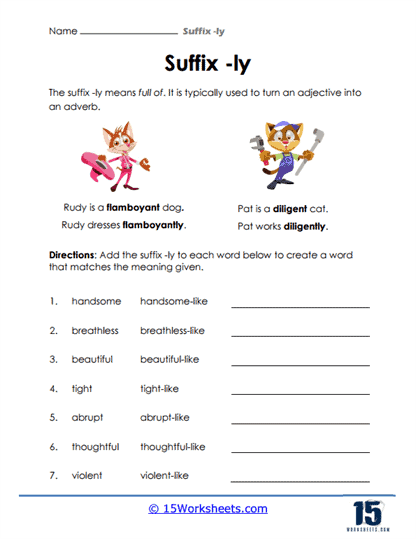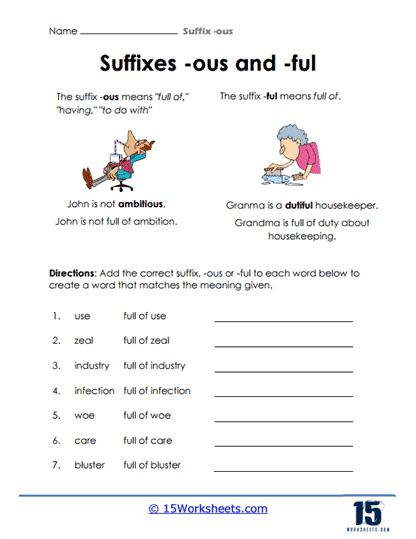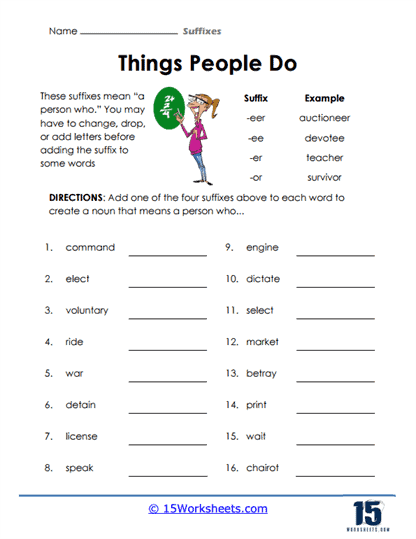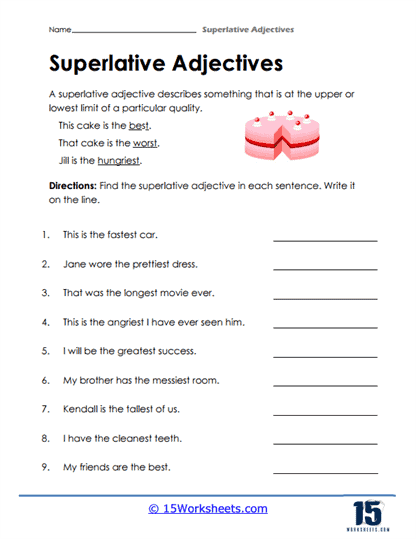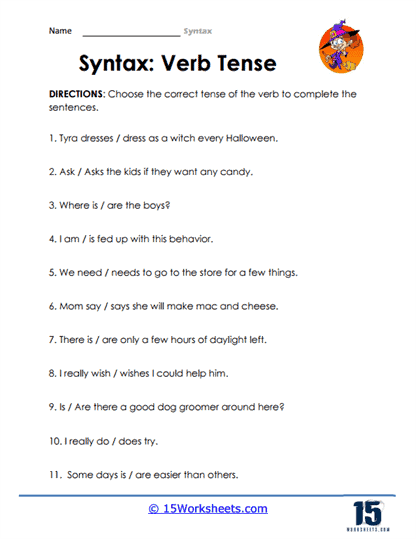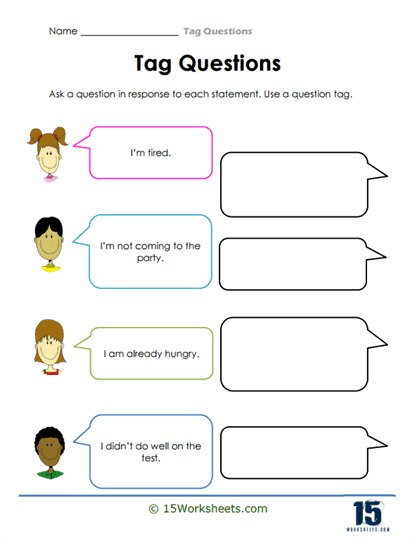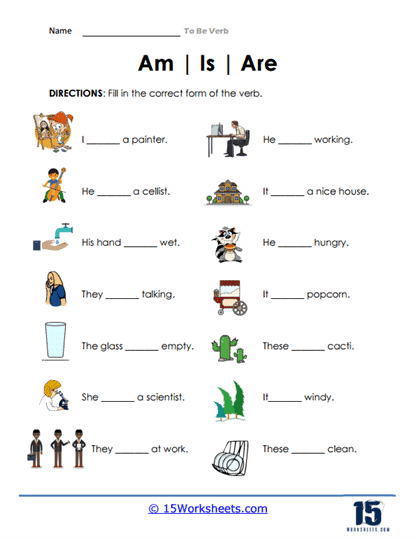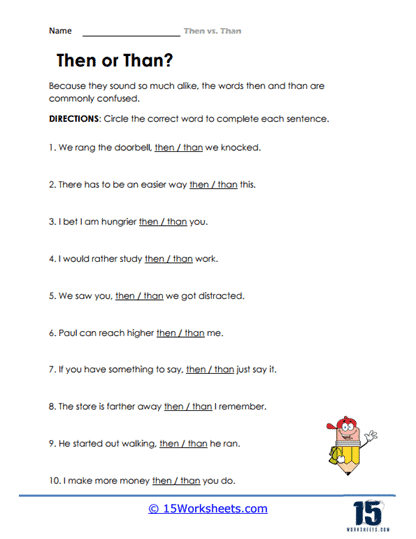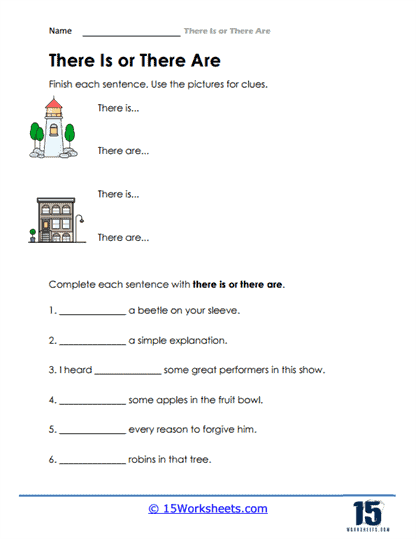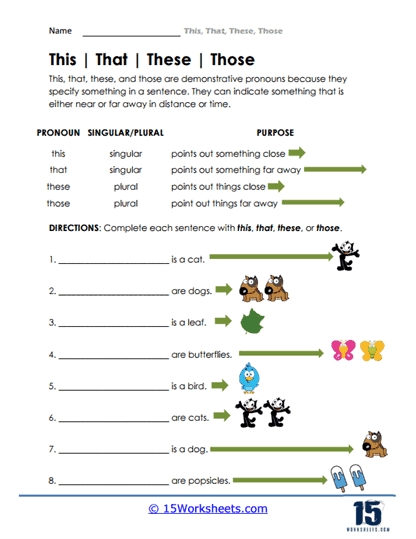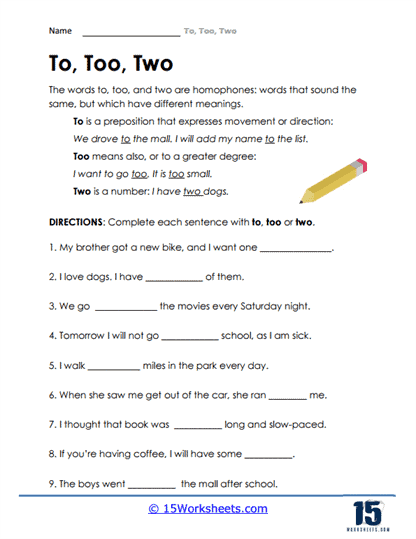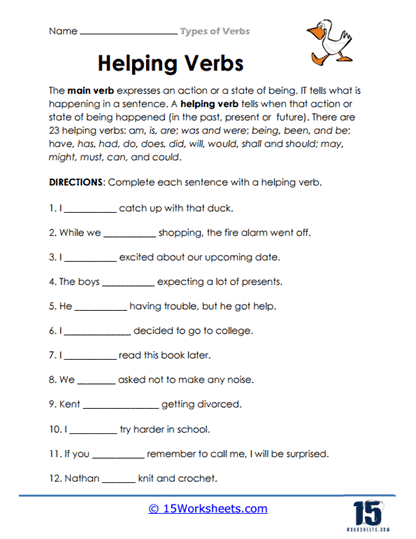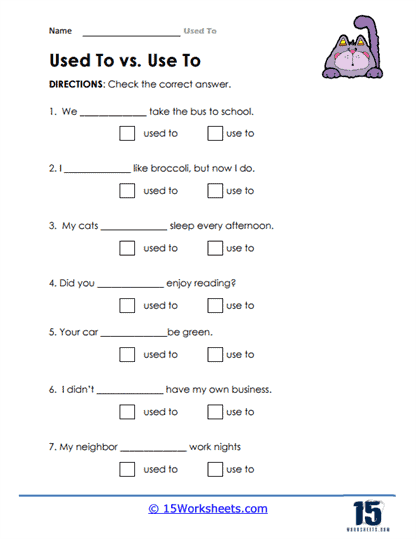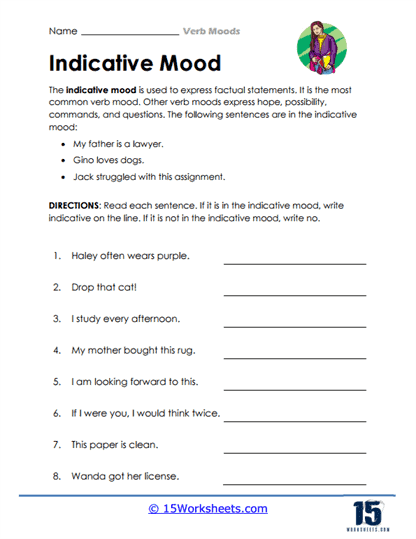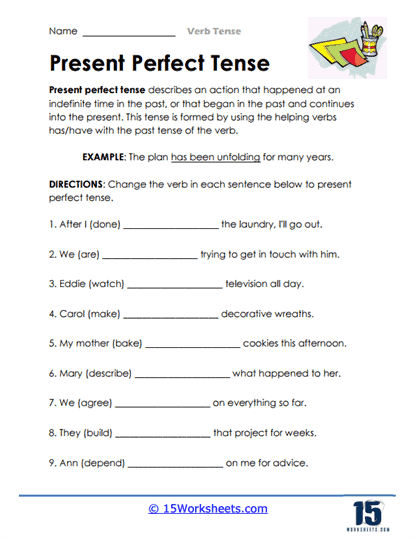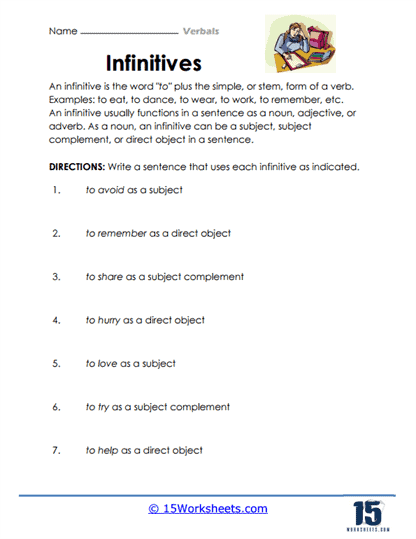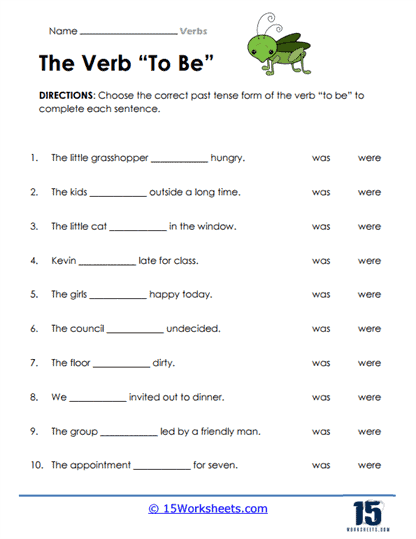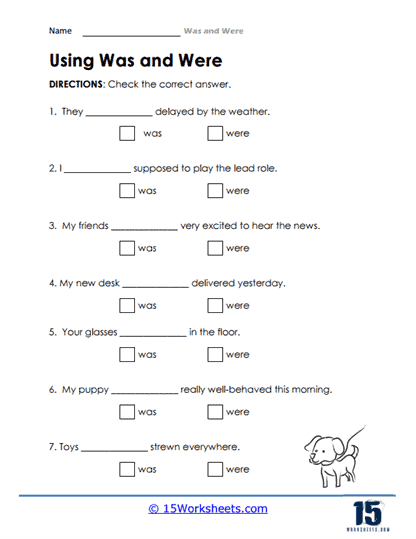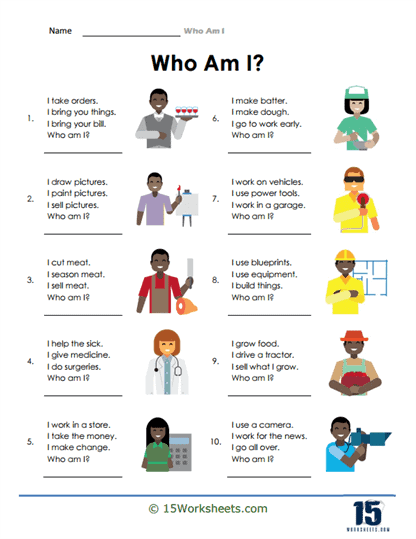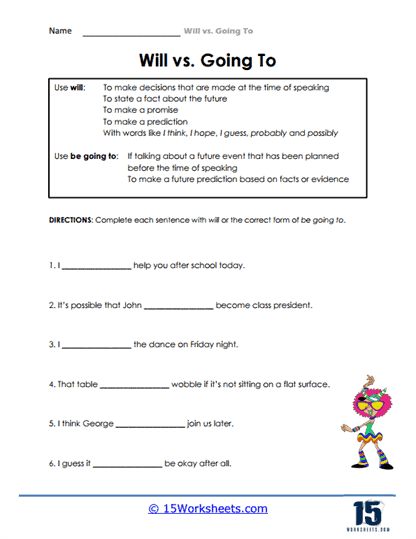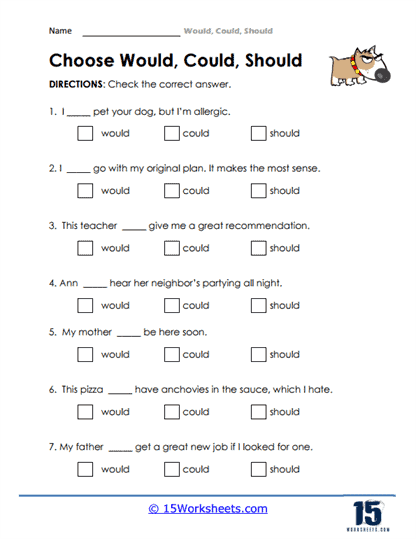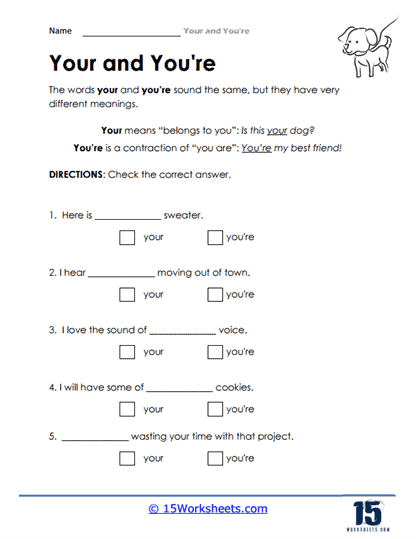Grammar Worksheets
About All Of Grammar Worksheets
Our grammar worksheets will help students practice and reinforce their understanding of grammatical rules and structures. These worksheets focus on specific areas such as sentence structure, punctuation, verb tenses, parts of speech, and proper usage. By completing exercises that require students to identify errors, correct sentences, or construct grammatically sound sentences, learners actively engage with the material, deepening their comprehension of language mechanics. Regular use of grammar worksheets aids in the development of strong writing skills, improves clarity in communication, and builds confidence in both written and spoken language. These worksheets are especially effective in helping students identify common mistakes, apply rules consistently, and ultimately enhance their overall language arts proficiency.
Covering an extensive range of topics, from basic concepts like nouns and verbs to more complex grammatical structures like appositives and subjunctive moods, these worksheets cater to learners at various levels. They provide structured, targeted practice that reinforces key language skills, allowing students to deepen their understanding of grammar in a systematic way. For teachers, these worksheets serve as a flexible tool to complement lesson plans, providing both introductory and advanced exercises that can be adapted to suit different learning needs. Homeschoolers can use them to build a comprehensive language curriculum, ensuring that all essential grammatical rules are covered thoroughly.
Students who engage with these worksheets develop a wide array of language arts skills. The worksheets on sentence modifiers, such as adjectives and adverbs, help learners express themselves more vividly and precisely, while those focused on verb tenses like future, past, and irregular verbs ensure students can communicate actions clearly across different timeframes. Additionally, worksheets on frequently confused words-such as “affect vs. effect” and “your vs. you’re”-enhance a student’s ability to write accurately, reducing common errors that may impede effective communication. By working on exercises that focus on sentence structure, subject-verb agreement, and pronoun usage, students can improve their clarity and coherence, vital for both spoken and written language.
Here is a detailed explanation of all of the various areas of our grammar worksheets:
We explore how we shorten the use of common words and phrases to communicate our message to others. We also explore the different methods that used to achieve this and the purpose behind it.
We pay particular attention to this part of speech that can be used to describe a physical or mental activity.
Students learn how to be more descriptive with their thoughts through the proper use of this part of speech.
Adjectives vs. Adverbs Worksheets
These sentence modifiers are often confused. This is a common error in written language. We explore the use of each modifier in sentence structure.
These clauses modify the verb in the main clause of a thought. We explore how word placement can change the meaning of a sentence.
These parts of speech are used to modify adjectives, verbs, and other adverbs. They are often used to explain the degree to which something contributes to an action or attribute.
We spend time exploring the proper use of these homophones in sentences. The core principle to remember is that they signify different parts of speech (affect is a verb, effect is a noun).
These terms are used to provide a greater level of information about a noun to the reader.
Articles of English Worksheets
We help students learn how to use articles to clarify meaning in their writing. We also explore when their use can hurt the language.
These are often referred to as helping verbs. When used properly they can provide a greater level of emphasis or even negation to the tone and mood of our thoughts.
The focus here is to help non-native English speakers communicate their thoughts clearly and precisely.
These terms help us to describe groups as a collective. When used appropriately it can enhance our language.
We learn how to pair words in written and spoken language to effectively heighten our thoughts.
We look at many different regional uses of language as slang that will often confuse non-native English speakers.
Comparative Adjectives Worksheets
When we want to highlight the differences between two nouns, we will often use these terms. They often require the use of a suffix or degree term.
Complete the Sentence Worksheets
These are quick and easy grammar worksheets that cover a great number of skills that are emphasized in this area.
These are terms that are composed of multiple words that help use create an entire new meaning or varying degree. This helps us convey a greater level of preciseness to original intentions.
These are nouns that can be experienced with the help of one of human senses. When used appropriately these can make our language vivid for our audience.
Conditional Language Worksheets
This type of communication is used to refer to something that may or may not occur. The goal is often to explore hypothetical situations.
These terms are used to connect various forms of language together to help us express a thought. They help us establish a bridge across ideas and add a sense of clarity.
We learn how to use these shortened forms of words and phrases. They are often used in informal writing and spoken language, but they must be used sparingly in formal writing.
We learn how to use terms that help us describe the location or position of something.
These are specific reference in our sentence that are used to reference a noun in a sentence.
We explore how to spot the noun or pronoun that receives the action of the verb in a sentence.
While these terms are often connected and confused, we explore how to properly use them in your writing.
These worksheets explore how to spot the improper use of grammar when it comes to terms of negation.
We explore how to properly use terms of the past tense that end in -ed.
Ethos, Pathos, Logos Worksheets
These worksheets explore the use of these three different modes of persuasion in our language. The proper use of this in our language can help you win over your audience.
We learn how to realign and place words within our sentences to establish the sense of something that will take place in the future.
These verb forms can act as nouns. They often established by adding an -ing ending.
Students will often muddle the use of this adjective (good) and adverb (well).
Grammar Corrections Worksheets
These worksheets put students in the role of teacher. They will correct sentences and paragraphs that are not well thought out.
Students learn how to properly use these specific auxiliary verbs in their language.
We learn how to provide readers additional information to help them better understand what we are describing.
The English Language can often be confusing because words like these have the same spelling, but they are pronounced differently and have different meanings.
To add to the confusion, we will often come across terms that are pronounced and spelled the same but have different meanings.
The last area in this consecutive collective source of misunderstanding for students. These terms are pronounced the same, but they have different spelling and meaning.
How Much or How Many Worksheets
Students learning how to apply these phrases properly in their written language.
We take some time to approach the usage of these pronouns grammatically correct in sentence are pre-written for us. We then compose our own sentences with this new skill in mind.
These types of sentences have three primary purposes. They are used to either offer advice, commands, or instructions. They lend themselves to helping us make helpful suggestions or recommendations.
We use these different prepositions to signify a specific location or time. We learn how to use these properly in sentences.
Indefinite Pronouns Worksheets
When we are using relatively general language, we will often choose to use these types of pronouns. You will find it helpful to include them regularly in your written language to break up your thoughts and not repeat your use of words or phrases.
These root forms of verbs are often led by the use of the word (to). These types of terms serve countless purposes in your sentences.
We use these terms when we want to elicit an emotional response from our readers or general audience. They can help you express a level of excitement or surprise, as needed.
Students will work on using the words and phrases to help them craft questions that work to ascertain a wide range of thoughts.
Irregular Plural Nouns Worksheets
These rule breakers take on their form and do not follow regular spelling patterns. We work through a wide range of use cases.
Students will work with verbs that are the equivalent of sight words. They defy all normal conventions of spelling and are often required to memorized in order to spelled consistently. These are the action words that we have trouble spelling.
These words take the verbal phrase (to be) to the next level. We learn when to use each form in the sentences that we compose.
I find that even adults confuse the use of these two terms. Especially those that do not diligently proof their own writing. We explore when to use the contraction and when to use the possessive pronoun in your language.
This is the all-encompassing area of this topic. We look at all the of governing principles that we use in our written language.
These are often referred to as modal verbs. They convey the speaker’s or author’s state of mind towards an action or state of the main verb in the sentence.
These types of clauses have so many different uses in our work that it is not even funny. You will find them critical to use when you are forming more complex sentences.
Noun, Verb, or Adjective Worksheets
We learn the purpose, use, and differentiation of these three core parts of speech. We look at when we should use these terms, their placement within sentences, and how they can heighten our level of communication.
These building blocks of language are either people, places, or things. We learn how to identify and place them effectively in our thoughts.
These parts of speech are a type of pronoun that is used to replace or stand in for the object of a verb or preposition in a sentence. They are extremely helpful to avoid repetition and create more concise and coherent sentences.
Order of Adjectives Worksheets
We display a variety of different means to heighten the significance of your language by using a varied approach to how you place your adjectives in sentence or paragraph.
We explore how to use this technique to improve the simplicity and effectiveness of your sentences. This will help you form a level of balance in your written language.
These are verb forms that function as adjectives or adverbs in a sentence. We look at this topic from a more general stance and the goal is to have students learn to classify the part of speech that these serve in sentences.
Students will learn how to classify the use of words and phrases in a series of statements. This is a hugely important aspect of helping you to improve your communication skills.
We learn how to use these terms to signify a particular person, place, or thing. They can also be used to clarify a sense of ownership or possession.
These parts of speech help to indicate the quantity or number of items being referred to in a sentence, allowing for more accurate and precise communication. They are used to represent more than one person, place, thing, idea, or concept.
These terms help us to avoid repetition and create more concise and coherent sentences by replacing or standing in for plural nouns. Learning how to use this spectrum of words can make your writing much more heightened.
These worksheets help students learn how to properly depict more than one of something.
These are nouns that indicate ownership or a relationship of belonging between two entities. We not only work on recognition but using these words in our own writing.
Possessive Pronouns Worksheets
We use these words to replace possessive noun phrases. This can be used to help us avoid repetition and create more concise and coherent sentences.
This section helps students delve deeper into the study of context. We expect students to understand and extend beyond the use of literal meanings.
Predicate Adjectives Worksheets
We learn how to use these types of terms to extend the meaning of a sentence. The goal is to provide the reader with additional information.
We explore a series of specific letters that ultimately change the meaning of words and phrases. Students learn how to use them to modify the meaning of words to their own advantage.
Prepositional Phrases Worksheets
These group of words function as a single unit within a sentence, typically providing additional information about time, place, direction, manner, or other aspects of the main action or state described by the sentence.
Students learn how to use these words that help them express relationships between nouns or pronouns and other words in a sentence, such as in, on, at, with, and by.
Prepositions of Place Worksheets
This selection of worksheets can do a great deal to help students learn how to express the relationship between a noun or pronoun and location or placement.
Prepositions of Time Worksheets
We explore how to express when something occurs and how long it takes place for.
Pronoun Antecedent Agreement Worksheets
We jump into the use of a grammatical rule that indicates the correlation between gender, number, and person involved.
We use these terms to help us keep track of the nouns or noun phrases. The proper usage of these words contributes to the natural flow of speech and writing in our language.
These parts of speech refer back to subject of sentence. You will learn how to identify them and use them to tighten up your language.
Regular and Irregular Verbs Worksheets
Being able to recognize the difference between these parts of speech are often slightly more difficult for students. The main difference lies in the way they form their past tense and past participle forms.
We learn the use of these types of terms to help us create complex and descriptive sentences.
These terms all refer to a single person, place, thing, or idea.
We work on the conversion from an individual to many in our sentences. This will help us to improve our use of collective terms across many different mediums.
You will learn how to express the idea of one of the various objects, people, and places that we will examine.
Subject and Predicate Worksheets
The subject is the “who” or “what” part of a sentence. It’s the person, place, thing, or idea that is doing or being something. The predicate is the part of the sentence that describes what the subject is doing or what condition the subject is in.
Subject pronouns are pronouns that are used as the subject of a sentence. They perform the action in a sentence, and are typically found at the beginning of sentences, although they can also appear after linking verbs.
Subject Verb Agreement Worksheets
This grammatic rule is fundamental to properly communicate your thoughts to your audience. We will learn to evaluate the rule and use it to advantage in language.
The subjunctive is used to explore conditional or imaginary situations. It’s often used in “if” statements or following certain verbs.
Subordinating Conjunction Worksheets
Subordinating conjunctions are conjunctions that join a subordinate (or dependent) clause to a main (or independent) clause.
We learn how to use these word endings to reveal a sense of degree or tense in our sentences. They can have a huge impact on the effectiveness of our connection to our audience.
Superlative Adjectives Worksheets
When we want to compare multiple values of things these come in real handy. They can add value to language and intensify our message to our readers.
We look at how to properly place our words and phrases for offer a sense of extreme influence on our ideas.
This simple verb is used to convey different states of identity and attributes. While it seems simple, it is often confused with the use of other phrases.
These terms are often confused because the make similar sounds. One is used to define a time or sequence (then) and the other is used solely for comparisons (than).
There Is or There Are Worksheets
We look at instances of when to use the singular and plural form of these phrases in writing.
This, That, These, Those Worksheets
We learn about the distance a noun resides from a speaker to help us learn which of these demonstrative pronouns best fits the use within our language.
The use of these three words in one of the most common typos made today. We explore the use of each term in our language.
Transitive and Intransitive Verb Worksheets
These types of verbs differ in whether or not they require an object to complete their meaning. Transitive verbs require one or more objects to complete their meaning. Intransitive verbs do not require an object to complete their meaning. The action ends with the subject, and isn’t being done to anything else.
The goal here is to focus on the timing of the language that is necessary to best convey our thoughts.
Verbs are words that express an action, occurrence, or state of being. They are one of the core parts of a sentence and are necessary to make a statement.
These are verbs that function as other parts of speech in a sentence, rather than as the main verb.
This is an often-overlooked aspect of our language. Students will learn how to properly conjugate verbs to best clarify the context of the words and phrases that they may need to use.
The use of these terms is often seen as subjective, but we explore a quick method to make sure your language is clear and concise with respect to first, second, and third person thoughts. We also dive into the use of plurals.
You will navigate the statements that are presented to understand the nature of the noun that is being presented to you.
The focus here is on future events that have not occurred yet. We center ourselves on instances where they are not used interchangeably.
Would, Could, Should Worksheets
These modal verbs serve very different purposes. We learn how to properly use them in our everyday language.
This is one of the most common typos found by even professional editors. We expand your level of alertness on how to use them properly in your language.


